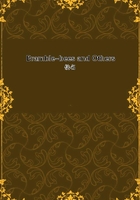
第75章 THE POISON OF THE BEE.(2)
Acting, therefore, under the instruction of that one guide, pain, Iplace the Bee's sting far above that of the predatory insects as an offensive weapon. A single one of its thrusts must equal and often surpass in efficaciousness the repeated wounds of the other. For all these reasons--an excessive display of energy; the variable quantity of the virus inoculated by a wriggling abdomen which no longer measures the emission by doses; a sting which I cannot direct as Iplease; a wound which may be deep or superficial, the weapon entering perpendicularly or obliquely, touching the nerve-centres or affecting only the surrounding tissues--my experiments ought to produce the most varied results.
I obtain, in fact, every possible kind of disorder: ataxy, temporary disablement, permanent disablement, complete paralysis, partial paralysis. Some of my stricken victims recover; others die after a brief interval. It would be an unnecessary waste of space to record in this volume my hundred and one attempts. The details would form tedious reading and be of very little advantage, as in this sort of study it is impossible to marshal one's facts with any regularity. Iwill, therefore, sum them up in a few examples.
A colossal member of the Grasshopper tribe, the most powerful in my district, Decticus verrucivorus (This Decticus has received its specific name of verrucivorus, or Wart-eating, because it is employed by the peasants in Sweden and elsewhere to bite off the warts on their fingers.--Translator's Note.), is pricked at the base of the neck, on the line of the fore-legs, at the median point. The prick goes straight down. The spot is the same as that pierced by the sting of the slayer of Crickets and Ephippigers. (A species of Green Grasshopper. The Sphex paralyses Crickets and Grasshoppers to provide food for her grubs. Cf. "Insect Life": chapters 6 to 12.--Translator's Note.) The giantess, as soon as stung, kicks furiously, flounders about, falls on her side and is unable to get up again. The fore-legs are paralysed; the others are capable of moving. Lying sideways, if not interfered with, the insect in a few moments gives no signs of life beyond a fluttering of the antennae and palpi, a pulsation of the abdomen and a convulsive uplifting of the ovipositor; but, if irritated with a slight touch, it stirs its four hind-legs, especially the third pair, those with the big thighs, which kick vigorously. Next day, the condition is much the same, with an aggravation of the paralysis, which has now attacked the middle-legs. On the day after that, the legs do not move, but the antennae, the palpi and the ovipositor continue to flutter actively. This is the condition of the Ephippiger stabbed three times in the thorax by the Languedocian Sphex. One point alone is missing, a most important point: the long persistence of a remnant of life. In fact, on the fourth day, the Decticus is dead; her dark colour tells me so.
There are two conclusions to be drawn from this experiment and it is well to emphasise them. First, the Bee's poison is so active that a single dagger-thrust aimed at a nervous centre kills in four days one of the largest of the Orthoptera (An order of insects including the Grasshoppers, Locusts, Cockroaches, Mantes and Earwigs, in addition to the Stick- and Leaf-insects, Termites, Dragon-flies, May-flies, Book-lice and others.--Translator's Note.), though an insect of powerful constitution. Secondly, the paralysis at first affects only the legs whose ganglion is attacked; next, it spreads slowly to the second pair; lastly, it reaches the third. The local effect is diffused. This diffusion, which might well take place in the victims of the predatory insects, plays no part in the latters' method of operation. The egg, which will be laid immediately afterwards, demands the complete inertia of the prey from the outset. Hence all the nerve-centres that govern locomotion must be numbed instantaneously by the virus.
I can now understand why the poison of the predatory Wasps is comparatively painless in its effects. If it possessed the strength of that of the Bee, a single stab would impair the vitality of the prey, while leaving it for some days capable of violent movements that would be very dangerous to the huntress and especially to the egg. More moderate in its action, it is instilled at the different nervous centres, as is the case more particularly with the caterpillars. (Caterpillars are the prey of the Ammophila, which administers a separate stab to each of the several ganglia.--Translator's Note.) In this way, the requisite immobility is obtained at once; and, notwithstanding the number of wounds, the victim is not a speedy corpse. To the marvels of the paralysers' talent we must add one more: their wonderful poison, the strength of which is regulated by delicate doses. The Bee revenging herself intensifies the virulence of her poison; the Sphex putting her grubs' provender to sleep weakens it, reduces it to what is strictly necessary.
One more instance of nearly the same kind. I prefer to take my subjects from among the Orthoptera, which, owing to their imposing size and the thinness of their skin at the points to be attacked, lend themselves better than other insects to my delicate manipulations. The armour of a Buprestis, the fat blubber of a Rosechafer-grub, the contortions of a caterpillar present almost insuperable obstacles to the success of a sting which it is not in my power to direct. The insect which I now offer to the Bee's lancet is the Great Green Grasshopper (Locusta viridissima), the adult female.
The prick is given in the median line of the fore-legs.